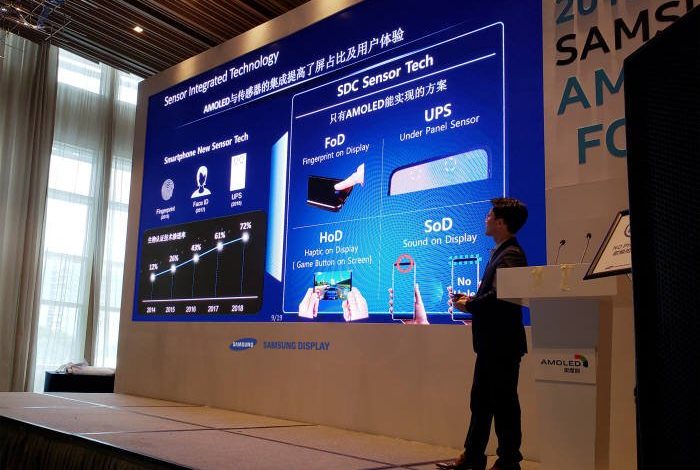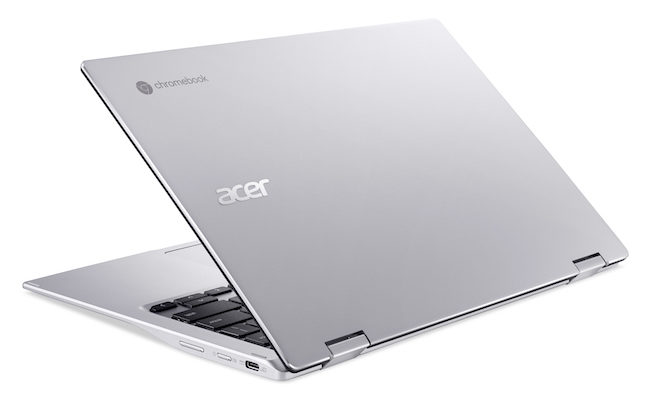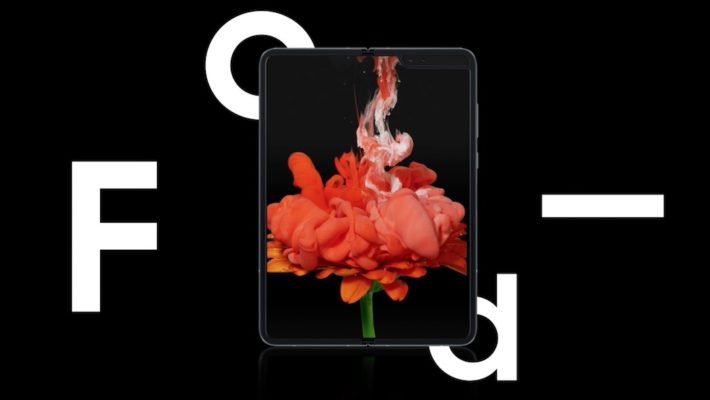It may seem as if every smartphone manufacturer has jumped on the top-notch trend, but Samsung has endured, and may completely bypass the design feature altogether.
The Korean smartphone maker recently showcased its future display technology at the 2018 Samsung OLED Forum in Shenzhen, China. Samsung detailed its plans to create smartphones with all of their major front-facing features embedded underneath their displays.
Such devices would feature display-embedded fingerprint sensors; camera lenses and other detection sensors located under the display; targeted haptic feedback locations within the touchscreen; and technology to allow sound to come through the display instead of through internal speakers. If implemented, these advances could negate the need for bezels and top-notches on devices.
Tech leakster @IceUniverse attended the forum and shared the details on Twitter. The features may be included on Samsung’s upcoming Galaxy S10 flagship, which will likely release in early 2019. The model would be Samsung’s tenth-anniversary device for the Galaxy S line, so the manufacturer is expected to outfit it with some special features.
Samsung: The display maverick
Samsung’s original foray into updating display technology began with implementing the curved display design for its smartphones. Curved displays have allowed Samsung to begin thining bezels and helped increase display sizes without extensively increasing the dimensions of devices. Samsung was also among the first manufacturers to remove the capacitive fingerprint sensor from its devices. Since then many smartphone makers have commissioned Samsung’s curved display technology for their own devices.
Companies preparing for complete fullscreen
Smartphone maker Essential introduced the top-notch as a way to minimize bezels on the Essential PH-1, but once Apple adopted the feature on the iPhone X, the marketed exploded with devices notched to varying degrees. The feature has been one of many preambles to the no-bezel and no-sensor display. A number of Chinese manufacturers have experimented with in-display fingerprint sensors, releasing devices such as the Vivo Nex and Oppo R17.
Apple has also removed the capacitive home button and fingerprint sensor from its devices, opting to have only facial recognition as a biometric security feature. Many believe Apple also has in-display fingerprint sensor technology in the pipeline that was not ready in time for a debut on the original iPhone X.
If successfully released, a device with a completely unobstructed display would easily be the top technology on the market. It could be a win for Samsung in terms of devices sales, but also in terms of supplying displays for other manufacturers as many rival manufacturers still rely on Samsung as a component supplier.




